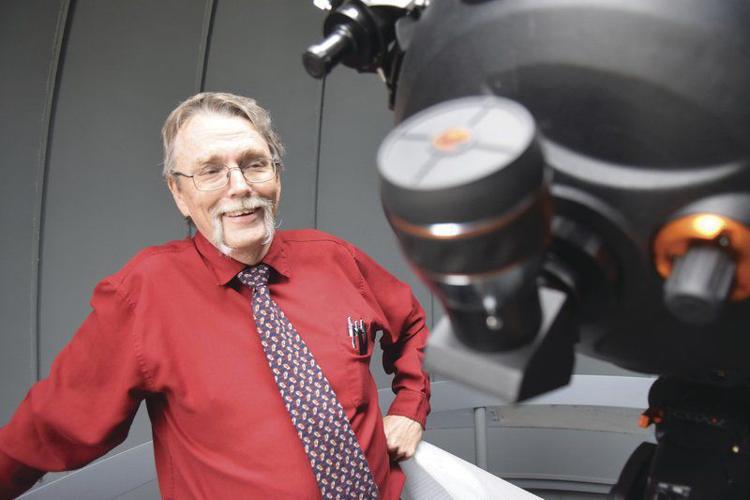Enid Public Schools students soon will be competing against communities around the world to earn a place on the International Space Station, not for themselves, but for science.
For the communities that participate, the Student Spaceflight Experiments Program challenges students fifth through 12th grades to design experiments to the same standards demanded of professional scientists. The best experiments are selected to take flight to the International Space Station.
While the students won’t be suiting up for takeoff, their hard work will be orbiting overhead.
“It gives them a shot at real science,” Enid High School astronomy teacher Dusty Hugaboom said. “If they get chosen, their experiment will be conducted by an astronaut from the space station … and then the results come back to the kids.”
The competition was created by National Center for Earth and Space Science Education, to share with students the experience of a real-world scientist, NCESSE founder Jeff Goldstein said.
“This is not a simulation,” he said.
At least 300 students in every community must participate for any proposed experiment to qualify, Goldstein said.
From Sept. 3 to Nov. 1, students will be “immersed,” in nine weeks of experiment, design and proposal writing, Goldstein said.
“One problem education has had … is that we teach science as if it is a book of knowledge,” he said. “Science has never been a book of knowledge, science is a process, science is a journey.”
“We should be doing what scientists and engineers actually do … and if we’re not, then we’re not preparing (our students) for the 21st century.”
Hugaboom said students of various grade levels across the district will be forming groups, each working to make something worthy of SSEP flight 14, scheduled June 2020.
Taft Elementary School students, incoming Longfellow Middle School sixth-graders and Hugabooms’ next year astronomy students are just some planned to take part, he said.
To date, 178 communities have taken part in the SSEP program since it began, engaging nearly 110,000 students in microgravity experimentation, according to the NCESSE.
If Enid Public Schools succeeds in designing a professional grade, space-worthy experiment for the SSEP program, it will be the first community in Oklahoma to do so, Goldstein said.
“We’re born curious … every parent remembers the time when our kids were first capable of expressing themselves, and that’s when we know the unending stream of questions begins,” he said, scientists simply get paid to indulge those instinctual desires, curiosity, the need for answers.
After the nine weeks of work are up, students will submit their proposals to a panel of teachers and community members, who then select the best three. The top three from each community are sent to NCESSE, which decides what stays and what goes.
That announcement will be made by Dec. 17, according the NCESSE website.
“We’re giving them the ability to be real researchers and be part of America’s space program in every sense of the word, and they have to go through exactly the same gate as professional microgravity researchers,” Goldstein said. “So we view these students as microgravity researchers, and if we give them the room to play they will do absolutely amazing things.”
Story provided by Enid News & Eagle
Written by: Mitchell Willetts


